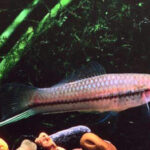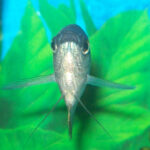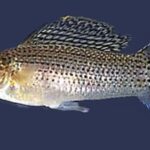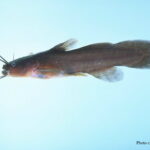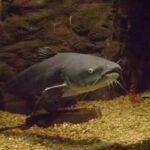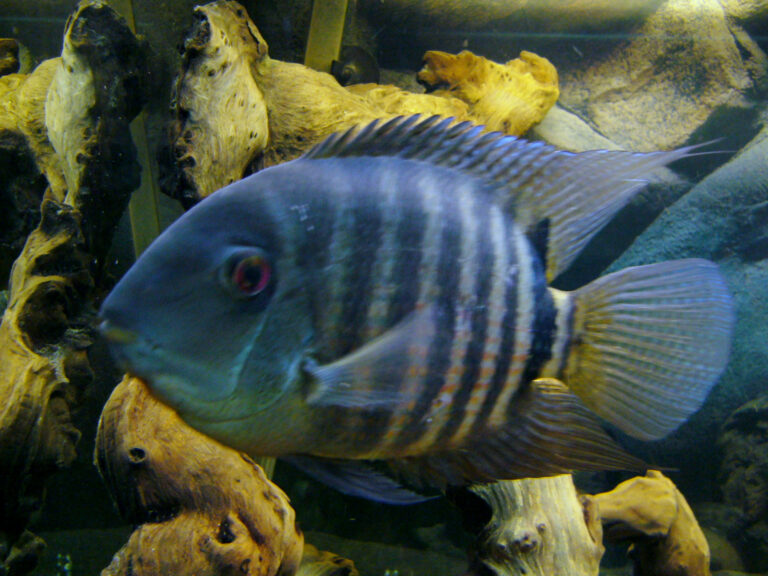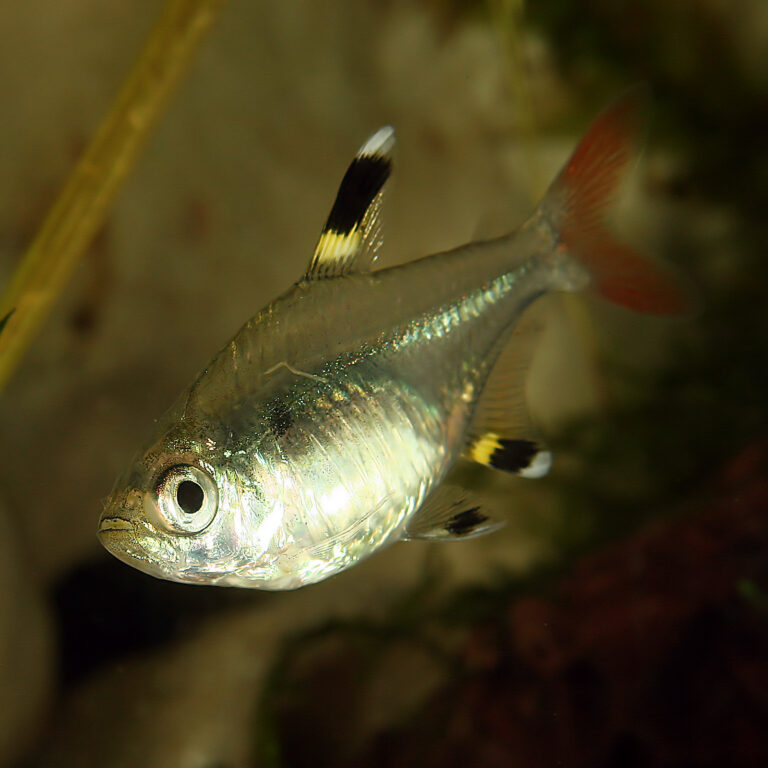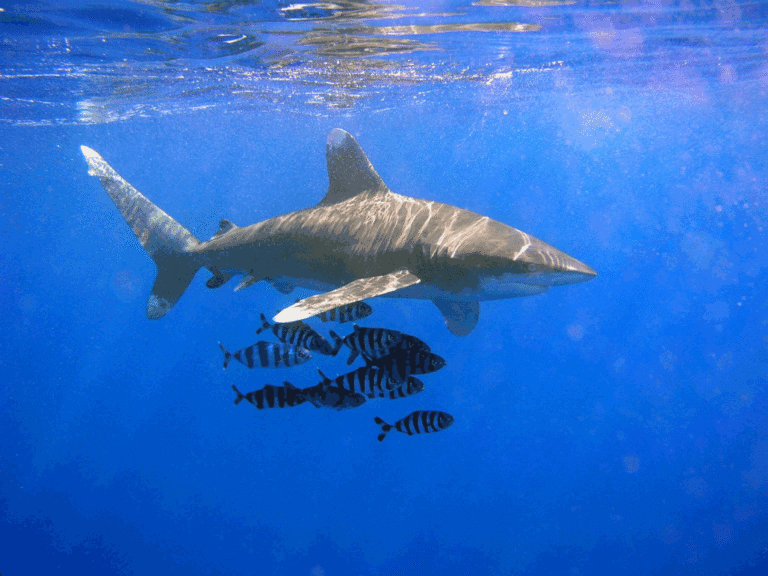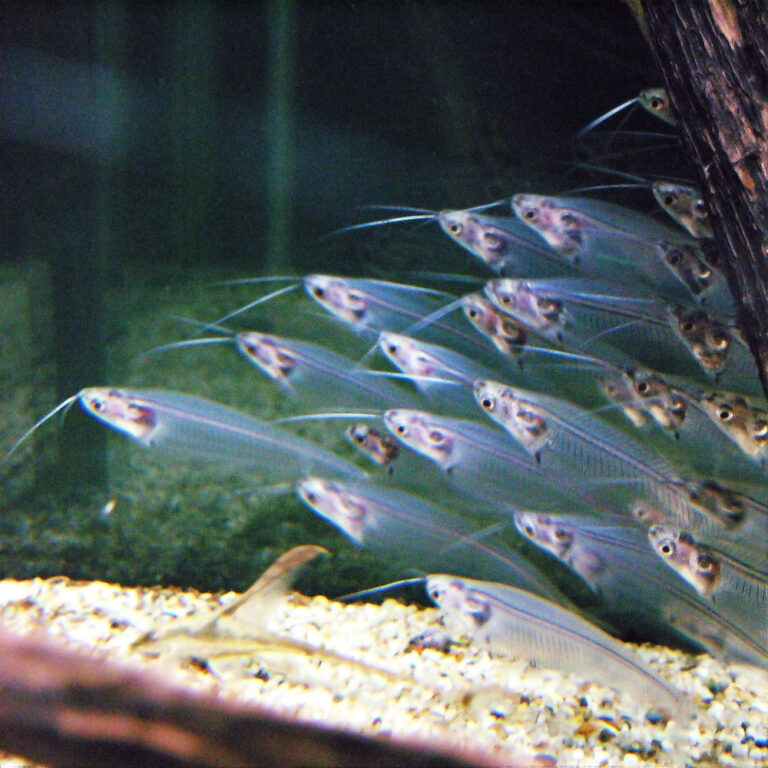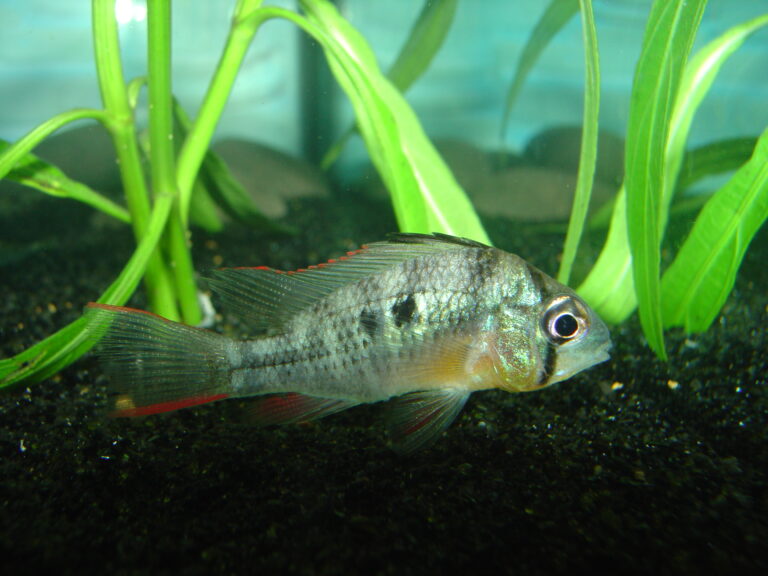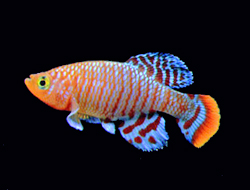Molly Fish
By Ryan Maron | Last Modified: June 5, 2025
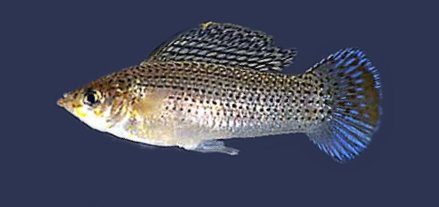
The Molly Fish represents one of the most adaptable and ecologically significant freshwater species in tropical and subtropical regions worldwide. Known scientifically as *Poecilia sphenops* and closely related species within the *Poecilia* genus, these small livebearing fish play crucial roles as both primary consumers and prey species in their native ecosystems. Originally distributed throughout coastal regions of Mexico and Central America, Molly Fish have become globally recognized for their remarkable environmental tolerance and reproductive success.
These resilient fish serve as essential components of freshwater food webs, controlling algae populations and serving as vital forage for larger predatory species. Their ability to thrive in varying salinity levels, from pure freshwater to brackish conditions, makes them particularly valuable as indicator species for environmental health assessment. The ecological flexibility that allows Molly Fish to colonize diverse aquatic habitats has made them both beneficial native species and occasionally problematic invasive populations when introduced outside their natural range.
| Feature | Details |
|---|---|
| Common Name | Molly Fish |
| Scientific Name | Poecilia sphenops |
| Family | Poeciliidae |
| Typical Size | 6-12 cm (2.4-4.7 inches), 8-15 grams |
| Habitat | Freshwater to brackish coastal waters |
| Diet | Omnivorous – algae, detritus, small invertebrates |
| Distribution | Mexico to Colombia, introduced globally |
| Conservation Status | Least Concern |
Taxonomy & Classification
The Molly Fish belongs to the family Poeciliidae, commonly known as livebearers, which encompasses over 200 species of small freshwater fish characterized by internal fertilization and live birth. Within this diverse family, the genus *Poecilia* contains approximately 40 recognized species, with *Poecilia sphenops* serving as the type species most commonly referred to as the common molly or short-finned molly.
The taxonomic classification reveals the evolutionary relationships that have shaped Molly Fish characteristics. The family Poeciliidae emerged approximately 26 million years ago during the Oligocene epoch, with the *Poecilia* genus diversifying throughout Central and South America over the past 10 million years. Modern molecular phylogenetic studies have identified several closely related species often grouped under the common name “molly,” including *Poecilia mexicana*, *Poecilia velifera*, and *Poecilia latipinna*, each adapted to specific geographic regions and environmental conditions.
Recent genetic research has revealed significant intraspecific variation within *Poecilia sphenops*, suggesting the existence of multiple cryptic species or distinct population lineages. These findings have important implications for conservation efforts and ecological management, as different populations may exhibit varying tolerances to environmental stressors and play distinct roles within their respective ecosystems. The complex taxonomic relationships within the molly group continue to be refined through ongoing morphological and genetic analyses.
Physical Description
Molly Fish exhibit considerable morphological diversity both between species and within populations, reflecting their adaptation to varied environmental conditions. Adult specimens typically measure between 6-12 centimeters in total length, with females generally achieving larger sizes than males. The body shape is moderately compressed laterally, with a relatively deep profile that provides efficient maneuverability in dense aquatic vegetation and shallow water environments.
The most distinctive physical characteristic of Molly Fish is their pronounced sexual dimorphism. Males possess a modified anal fin called a gonopodium, which serves as the reproductive organ and appears as an elongated, rod-like structure. This adaptation allows for internal fertilization, a key evolutionary advantage that has contributed to their reproductive success. Females display a broader, more rounded body profile, particularly when gravid, and possess a traditional fan-shaped anal fin.
Coloration patterns vary dramatically among populations and species within the molly complex. Wild-type specimens typically exhibit subdued colors ranging from olive-green to silver-gray, often with subtle metallic highlights that provide effective camouflage in natural habitats. Dark spotting or marbling patterns frequently occur along the flanks, while the dorsal and caudal fins may display intricate patterns of spots or bands. Selective breeding in aquaculture has produced numerous color varieties, though these artificial strains rarely persist in wild populations due to increased predation pressure and reduced fitness.
The fin structure of Molly Fish reflects their ecological niche as surface and mid-water dwellers. The dorsal fin is positioned relatively far back on the body, providing stability during surface feeding behaviors. The caudal fin is moderately forked, offering a balance between sustained swimming efficiency and rapid acceleration capabilities essential for predator avoidance.
Habitat & Distribution
The native range of Molly Fish extends from southeastern Mexico through Central America to northern South America, encompassing coastal regions from the Gulf of Mexico to Colombia. This distribution pattern reflects their evolutionary origin in the Mesoamerican freshwater systems and subsequent dispersal throughout the Caribbean drainage basins. The species demonstrates remarkable habitat flexibility, occupying environments ranging from pristine mountain streams to heavily polluted urban waterways.
Natural Molly Fish populations thrive in coastal freshwater systems with periodic saltwater intrusion, including river mouths, coastal lagoons, and cenotes. Their exceptional salinity tolerance allows them to inhabit brackish waters with salinity levels up to 15 parts per thousand, approximately half the concentration of seawater. This euryhaline capability provides access to ecological niches unavailable to most freshwater fish species and contributes significantly to their evolutionary success.
Water temperature preferences range from 22-30°C (72-86°F), with optimal reproductive activity occurring within the upper portion of this range. Molly Fish show strong preferences for shallow, slow-moving waters with abundant aquatic vegetation, which provides both food resources and shelter from predators. Rocky substrates and areas with significant organic detritus accumulation also attract these fish due to the associated microbial communities that serve as important food sources.
Human activities have dramatically expanded the global distribution of Molly Fish through both intentional introductions and aquarium releases. Established populations now exist throughout the southern United States, particularly in Florida and Texas, where they have successfully colonized natural waterways. International introductions have resulted in established populations across Southeast Asia, Australia, and parts of Africa, though the long-term ecological impacts of these introductions remain under investigation.
Diet & Feeding Behavior
Molly Fish exhibit omnivorous feeding behavior with a pronounced preference for plant material and organic detritus, positioning them as important primary consumers in aquatic food webs. Their feeding strategy combines active foraging with opportunistic consumption, allowing them to exploit diverse food resources throughout their habitat range. Stomach content analyses reveal that algae and plant matter typically comprise 60-70% of their total dietary intake in natural environments.
The feeding apparatus of Molly Fish reflects their ecological role as surface and mid-water feeders. Their upward-angled mouth enables efficient collection of surface films, floating plant material, and terrestrial insects that fall into the water. The pharyngeal teeth are adapted for processing plant material, with grinding surfaces that break down tough algal cell walls and plant fibers. This specialization allows them to access nutritional resources unavailable to many other fish species in their habitat.
Seasonal variations in food availability significantly influence Molly Fish feeding patterns and dietary composition. During wet seasons, increased terrestrial runoff provides elevated levels of organic matter and associated microbial communities, leading to rapid growth and reproductive activity. Dry season conditions concentrate available food resources, intensifying intraspecific competition and potentially altering social feeding behaviors.
The grazing behavior of Molly Fish populations can significantly impact aquatic plant communities and algal productivity within their habitats. Dense populations may exert substantial browsing pressure on macrophytes and periphyton communities, potentially altering the structural complexity and species composition of aquatic habitats. This ecological influence extends beyond direct consumption, as their feeding activities can increase water turbidity and nutrient cycling rates, affecting overall ecosystem dynamics.
Behavior & Adaptations
Molly Fish demonstrate complex social behaviors that vary with population density, habitat structure, and reproductive status. Under normal conditions, they form loose aggregations rather than tight schooling formations, with individuals maintaining flexible social distances while remaining within visual contact of conspecifics. This semi-social behavior provides benefits of collective predator detection while allowing individual foraging flexibility and reduced intraspecific competition.
Territorial behavior becomes prominent during breeding periods, particularly among mature males competing for optimal mating territories. Dominant males establish and defend small areas with favorable conditions for courtship displays, typically located near dense vegetation or other shelter structures. These territories serve multiple functions, providing protected areas for mating activities while offering females assessment opportunities for mate selection based on territory quality and male condition.
The remarkable salinity tolerance of Molly Fish represents one of their most significant physiological adaptations. Specialized gill cells called chloride cells enable active regulation of ion balance across varying salinity gradients, allowing rapid transitions between freshwater and brackish conditions. This osmoregulatory capability provides access to refuge habitats during environmental stress and enables exploitation of food resources in salinity zones where most competitors cannot survive.
Behavioral thermoregulation plays a crucial role in Molly Fish ecology, with individuals actively seeking optimal temperature zones within their habitat. During cooler periods, they often aggregate in shallow areas where solar heating maintains elevated water temperatures. This behavior becomes particularly important at the extremes of their geographic range, where temperature fluctuations can significantly impact metabolic rates and reproductive success. Their ability to detect and respond to subtle temperature gradients enables them to maintain optimal physiological performance across diverse environmental conditions.
Reproduction & Life Cycle
The reproductive biology of Molly Fish exemplifies the evolutionary advantages of livebearing reproduction in variable aquatic environments. Unlike egg-laying species that require specific substrate conditions and extended parental care, Molly Fish females carry developing embryos internally, providing protection from environmental fluctuations and predation during the most vulnerable developmental stages. This reproductive strategy contributes significantly to their colonization success and population stability.
Molly Fish reach sexual maturity at approximately 3-4 months of age, with females typically maturing slightly later than males due to their larger adult size requirements. The reproductive cycle is closely tied to environmental conditions, with peak breeding activity occurring during warmer months when food resources are most abundant. Gestation periods range from 28-35 days, varying with water temperature and female nutritional status.
Courtship behavior involves elaborate male displays designed to attract female attention and demonstrate fitness quality. Males perform distinctive swimming patterns, including rapid approaches followed by lateral displays that showcase their coloration and fin development. The intensity and persistence of male courtship efforts correlate with their social status and territory quality, providing females with information for mate selection decisions.
Brood sizes typically range from 20-80 fry per reproductive event, with larger females producing correspondingly larger broods. The reproductive strategy emphasizes quantity over individual offspring investment, with females capable of producing multiple broods throughout the breeding season. Female Molly Fish possess the ability to store sperm for extended periods, enabling production of multiple broods from a single mating event and providing reproductive insurance against periods of low male availability.
Juvenile development follows a direct pattern without larval stages, with newly born fry immediately capable of independent feeding and swimming. This developmental strategy eliminates the vulnerable larval phase that characterizes many fish species, contributing to higher survival rates and faster population growth potential. Young Molly Fish initially remain in shallow, vegetation-rich areas where they feed primarily on microorganisms and fine organic particles until reaching sufficient size to exploit adult food resources.
Predators & Threats
Molly Fish face predation pressure from a diverse array of aquatic and terrestrial predators throughout their life cycle, with vulnerability varying significantly between developmental stages and habitat types. Adult Molly Fish represent important prey items for larger freshwater fish species, including bass, pike, and various cichlid species within their native range. Piscivorous birds such as herons, egrets, and kingfishers also contribute significant predation pressure, particularly in shallow water habitats where Molly Fish concentrate for feeding and reproduction.
Juvenile and fry stages experience the highest predation mortality, with survival rates often below 5% under natural conditions. Aquatic invertebrates including dragonfly nymphs, diving beetles, and giant water bugs consume large numbers of young Molly Fish, while adult fish species readily consume fry as supplemental protein sources. The timing of reproduction becomes critical, as seasonal variations in predator abundance can dramatically influence recruitment success.
Environmental threats pose increasingly significant challenges for wild Molly Fish populations, particularly in regions experiencing rapid development and industrialization. Water pollution from agricultural runoff, urban development, and industrial discharge can alter water chemistry beyond the tolerance limits even of these adaptable fish. Habitat modification through dam construction, channel alteration, and wetland drainage eliminates critical breeding and foraging areas essential for population maintenance.
Climate change impacts represent emerging threats with potentially severe consequences for Molly Fish populations. Rising water temperatures may push populations beyond their thermal tolerance limits, while altered precipitation patterns can disrupt the salinity gradients that provide important ecological niches. Extreme weather events, including hurricanes and prolonged droughts, can cause massive population mortality and habitat destruction that may require decades for recovery.
Invasive species introductions create additional competitive and predation pressures in both native and introduced ranges. Non-native predatory fish species often lack co-evolutionary relationships with Molly Fish, potentially leading to higher predation rates than those exerted by native predators. Competition from other introduced species for food resources and breeding sites can reduce carrying capacity and population growth rates, particularly in already stressed ecosystems.
Conservation Status
The International Union for Conservation of Nature currently lists Molly Fish as Least Concern due to their widespread distribution, large population sizes, and demonstrated adaptability to human-modified environments. However, this broad classification masks significant conservation challenges facing specific populations and subspecies throughout their native range. Regional assessments reveal concerning population declines in several areas where habitat destruction and water quality degradation have intensified.
Local extirpations have occurred in portions of their historical range, particularly in highly urbanized coastal areas of Mexico and Central America where freshwater habitats have been severely modified or eliminated. These losses represent not only population declines but also potential genetic diversity reduction, as isolated populations often evolve unique adaptations to local environmental conditions. The conservation significance of this genetic diversity has become increasingly recognized as climate change creates new selective pressures.
Conservation efforts for Molly Fish primarily focus on habitat protection and water quality improvement rather than species-specific management programs. Wetland restoration projects throughout their native range provide indirect benefits by maintaining the diverse aquatic habitats essential for sustainable populations. International wetland conservation initiatives play crucial roles in preserving the coastal freshwater systems that support native Molly Fish populations.
The complex conservation status of Molly Fish as both native species requiring protection and invasive species requiring management creates unique challenges for resource managers. In native habitats, conservation priorities include maintaining water quality standards, protecting riparian vegetation, and controlling pollution sources that threaten aquatic ecosystem integrity. In introduced ranges, management strategies focus on preventing further spread while minimizing ecological impacts on native fish communities.
Research priorities for Molly Fish conservation include detailed population genetics studies to identify distinct evolutionary lineages requiring specific protection measures. Understanding the ecological impacts of introduced populations remains essential for developing appropriate management strategies that balance ecosystem protection with recognition of established populations that may now provide important ecological services in their adopted habitats.
Human Interaction
The relationship between humans and Molly Fish spans multiple dimensions, from their significance as popular aquarium species to their emerging roles in environmental monitoring and biological control applications. The global aquarium trade has made Molly Fish among the most widely distributed freshwater fish species, with millions of individuals bred annually in commercial facilities worldwide. This industry provides economic benefits while simultaneously creating pathways for unintentional introductions into natural waterways.
Aquaculture applications extend beyond the ornamental trade, with Molly Fish increasingly utilized in integrated pest management systems for mosquito control. Their efficient consumption of mosquito larvae in both freshwater and brackish water environments makes them valuable biological control agents in areas where chemical pesticides pose environmental concerns. Several countries have implemented successful programs using Molly Fish populations to reduce disease vector mosquito populations in constructed wetlands and retention ponds.
Scientific research applications have established Molly Fish as important model organisms for studies of evolutionary biology, environmental toxicology, and behavioral ecology. Their rapid generation times, ease of maintenance, and well-characterized genetics make them valuable research subjects for investigating adaptation mechanisms and environmental stress responses. Studies utilizing Molly Fish have contributed fundamental insights into evolutionary processes, sexual selection, and ecological adaptation.
Environmental monitoring programs increasingly employ Molly Fish as indicator species for assessing aquatic ecosystem health. Their sensitivity to water quality parameters and pollutant exposure makes them useful early warning systems for environmental degradation. Behavioral changes, reproductive success, and population dynamics of Molly Fish populations can provide valuable information about ecosystem stress before more sensitive species experience population crashes.
The educational value of Molly Fish in promoting aquatic conservation awareness cannot be understated. Their accessibility through the aquarium trade, combined with their interesting behaviors and ecological significance, makes them excellent ambassadors for freshwater conservation education. Many environmental education programs utilize Molly Fish to teach concepts of habitat protection, water quality, and ecosystem interconnections to students and community groups.
Interesting Facts
Molly Fish possess several remarkable biological capabilities that distinguish them among freshwater fish species. Their ability to survive in pure saltwater for extended periods exceeds that of many marine fish species’ tolerance for freshwater, demonstrating exceptional physiological flexibility. Laboratory studies have documented survival in full-strength seawater for over 30 days, though reproductive success requires brackish or freshwater conditions.
The color-changing abilities of some Molly Fish populations represent sophisticated adaptive responses to environmental conditions and social situations. Individuals can rapidly alter their coloration intensity and pattern within minutes, using specialized chromatophore cells to communicate social status, respond to threats, or blend with changing backgrounds. This capability provides both predator avoidance benefits and complex intraspecific communication opportunities.
Molly Fish exhibit remarkable learning capabilities and memory retention that challenges traditional assumptions about fish intelligence. Research has demonstrated their ability to learn complex maze patterns, recognize individual conspecifics, and retain learned behaviors for extended periods. These cognitive abilities likely contribute to their success in navigating complex social hierarchies and adapting to novel environmental conditions.
The reproductive flexibility of female Molly Fish includes the ability to switch between sexual and asexual reproduction under specific environmental conditions. While normal reproduction involves sexual processes, some populations can produce genetically identical offspring through parthenogenesis when males are unavailable or environmental conditions favor rapid population expansion. This reproductive plasticity provides significant advantages for colonizing new habitats.
Temperature-dependent sex determination occurs in some Molly Fish populations, with environmental temperature during early development influencing the sex ratio of offspring. This phenomenon allows populations to adjust their demographic structure in response to environmental conditions, potentially optimizing reproductive success under varying ecological circumstances. The mechanisms controlling this process continue to be investigated by reproductive biologists.
Conclusion
Molly Fish represent a remarkable example of evolutionary adaptability and ecological success in freshwater environments. Their unique combination of physiological tolerance, reproductive flexibility, and behavioral complexity has enabled them to thrive across diverse habitats while maintaining important ecological roles as both consumers and prey species. Understanding their biology and ecological relationships provides valuable insights into the mechanisms underlying successful species adaptation and the complex interactions shaping aquatic ecosystem dynamics.
Share The Article:
More Fish Species:
-
Pleco
The **Pleco**, scientifically known as *Pterygoplichthys multiradiatus* (common pleco), represents one of the most recognizable and ecologically significant groups…
-
Lyretail Molly
The Lyretail Molly (*Poecilia latipinna*) stands as one of the most recognizable and ecologically significant freshwater fish species in…
-
Mickey Mouse Platy
The Mickey Mouse Platy (*Xiphophorus maculatus*) stands as one of the most recognizable and beloved freshwater aquarium fish in…
-
Severum Cichlid
The Severum Cichlid represents one of South America’s most recognizable and ecologically significant freshwater fish species. Known scientifically as…
-
Bigeye Thresher Shark
The Bigeye Thresher Shark represents one of the ocean’s most extraordinary predators, distinguished by its dramatically elongated tail fin…
-
Pristella Tetra
The Pristella Tetra (Pristella maxillaris) stands as one of South America’s most distinctive freshwater aquarium species, renowned for its…
Discover
-
Oceanic Whitetip Shark
The Oceanic Whitetip Shark (*Carcharhinus longimanus*) stands as one of the ocean’s most formidable and recognizable apex predators, distinguished…
-
River Fishing Techniques: Master the Moving Water
Fishing rivers presents a unique set of challenges and rewards that I’ve come to appreciate over my three decades…
-
Yellowfin VS Bluefin Tuna: Which Should You Target? (Expert Guide)
Let’s be honest – the first time I saw a yellowfin and bluefin tuna side by side at the…
-
How to Fish with Dry Flies: Beginner’s Guide to Surface Action
There’s something almost magical about watching a trout rise to sip your dry fly from the surface. I still…
-
Pennsylvania Fishing License: Complete Guide for Anglers in 2025
Getting your Pennsylvania fishing license sorted isn’t exactly the most exciting part of fishing, but it’s absolutely necessary if…
-
Ice Fishing Techniques for Anglers in 2025
Last January, I was out on Higgins Lake during that brutal cold snap – you remember, when it dropped…
Discover
-
Glass Catfish
The Glass Catfish (Kryptopterus bicirrhis) stands as one of Southeast Asia’s most distinctive freshwater species, renowned for its remarkable…
-
Smallmouth Black Bass Fishing: Complete Guide for 2025
If you’ve ever felt that sudden, powerful tug on your line followed by an acrobatic jump that leaves your…
-
Bolivian Ram
The Bolivian Ram (Mikrogeophagus altispinosus) stands as one of South America’s most captivating cichlid species, representing a prime example…
-
How to Fish for Bluegill: 2025 Complete Guide
Bluegill might not be the biggest fish in the pond, but they sure make up for it in fight…
-
Killifish
Killifish represent one of the most diverse and ecologically significant groups of small freshwater and brackish water fish, comprising…
-
Best Saltwater Fishing Rigs in 2025
As someone who’s spent over three decades casting lines into just about every body of water I could find,…





